Cardionerds: A Cardiology Podcast

293. ACHD: Interventional Cardiology with Dr. Jamil Aboulhosn and Dr. Joanna Ghobrial – Part 1
CardioNerds (Amit Goyal and Daniel Ambinder), ACHD series co-chairs Dr. Dan Clark and Dr. Josh Saef, and ACHD FIT lead Dr. J.D. Serfas (Duke University) and Cardiology Fellow Dr. Victoria Thomas (Vanderbilt University) join ACHD experts Dr. Jamil Aboulhosn (Professor of Medicine at UCLA and the director of the Ahmanson/UCLA Adult Congenital Heart Disease Center) and Dr. Joanna Ghobrial, Medical and Interventional Director of the Adult Congenital Heart Disease Center at Cleveland Clinic. They discuss common ACHD pathologies that benefit from interventional procedures such as transcatheter pulmonic valve replacement (TPVR) and share new advancements in transcatheter approaches to correct sinus venosus defects. They end with a brief discussion on how to become an adult cardiology interventionalist that performs ACHD interventions. Episode notes were drafted by Dr. Victoria Thomas. Audio editing by CardioNerds Academy Intern, student doctor Akiva Rosenzveig.
The CardioNerds Adult Congenital Heart Disease (ACHD) series provides a comprehensive curriculum to dive deep into the labyrinthine world of congenital heart disease with the aim of empowering every CardioNerd to help improve the lives of people living with congenital heart disease. This series is multi-institutional collaborative project made possible by contributions of stellar fellow leads and expert faculty from several programs, led by series co-chairs, Dr. Josh Saef, Dr. Agnes Koczo, and Dr. Dan Clark.
The CardioNerds Adult Congenital Heart Disease Series is developed in collaboration with the Adult Congenital Heart Association, The CHiP Network, and Heart University. See more
Disclosures: None
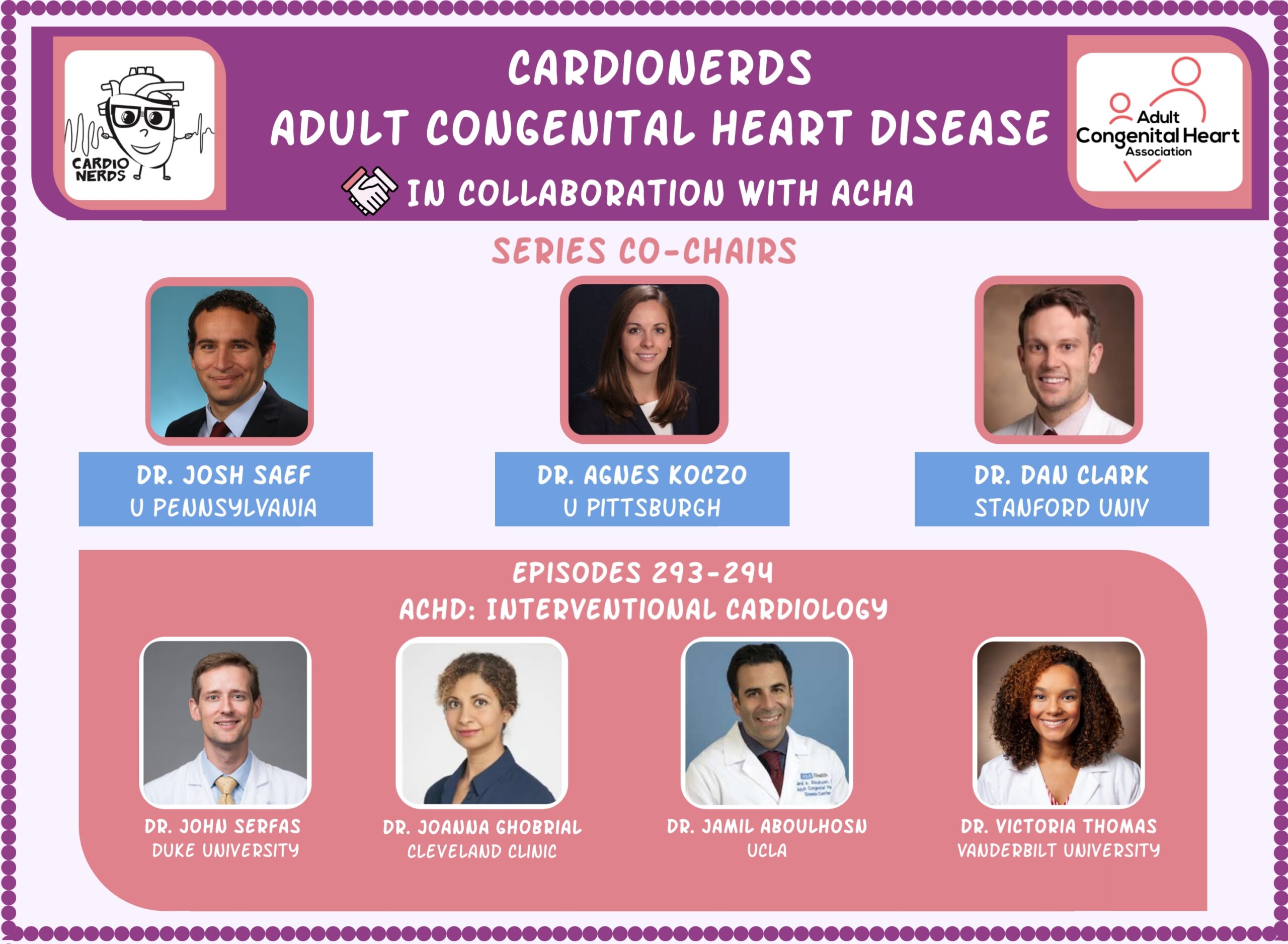
CardioNerds Adult Congenital Heart Disease Page
CardioNerds Episode Page
CardioNerds Academy
Cardionerds Healy Honor Roll
CardioNerds Journal Club
Subscribe to The Heartbeat Newsletter!
Check out CardioNerds SWAG!
Become a CardioNerds Patron!
Pearls – ACHD: Interventional Cardiology
- The ductus arteriosus, which is formed from the distal portion of the left sixth arch, is key to fetal circulation because it allows blood to bypass
- Transcatheter pulmonic valve replacement (TPVR) is a treatment for many ACHD patients that can spare them repeat sternotomies. This is important as many ACHD patients hava already undergone multiple surgeries in their childhood.
- Before any ACHD cardiology intervention, appropriate imaging (TEE, TTE, Cardiac MRI, Cardiac CTA, and/or 3D printing) is imperative to understanding the relevant anatomy and hemodynamics to guide procedural indication and planning.
- As with other structural interventions, consider a SENTINEL device (cerebral embolic protection system) to provide embolic protection in procedures that could lead to debris/embolic dislodgement when appropriate.
- Sinus venosus defects can be repaired via a transcatheter approach with a covered stent in the superior vena cava (SVC).
- Consider using 3D printing or 3D digital imaging when preparing for complex ACHD interventions.
Notes- ACHD: Interventional Cardiology
1. When considering a patient for TPVR there are 3 types of landing zones for pulmonic valves in ACHD patients:
- Pulmonary conduits or homografts. These are typically seen in patients with TOF or prior Ross or Rastelli procedure. These may be calcified and stenotic and so pre-dilatation is often needed before valve replacement.
- Bioprosthetic Valves. (Valve in Valve TPVR)
- Native outflow tract
2. What are some of the more severe complications to consider when talking to an ACHD patient about a TPVR?
- Coronary artery compression
- Conduit rupture
- Vessel injury (including the pulmonary bed)
- Valve embolization
- Endocarditis
3. What are some of the hemodynamic measurements one would want to pay attention to in a patient with a Fontan heart?
- You will see higher CVPs in patients with a Fontan palliation. The CVP will typically be higher than your wedge pressure, as the circuit relies on passive transpulmonary blood flow.
- Evaluating the wedge pressure is crucial. Elevation may indicate arrythmias and or ventricular dysfunction.
4. When considering closing a fenestration of a Fontan circuit, what are the measurements that one would want to consider?
- You would want to temporarily occlude the fenestration with a balloon on a wedge catheter for 10-15 minutes roughly to observe the patient’s Fontan pressure/CVP, wedge pressure, arterial saturation, PA saturation, and systemic blood pressure.
- You may want to reconsider occlusion if there is a significant drop in systemic pressures or cardiac output; or significantly increased Fontan pressure/CVP.
5. What are the technical considerations to consider when occluding a fenestration in a Fontan circuit?
- You want to make sure there is no thrombus in the fenestration or Fontan circuit.
- Consider using the SENTINEL cerebral protection system/device (a device that can provide embolic protection from dislodged debris or emboli). However, this device is typically unable to be used in ACHD who have undergone a BTT shunt due to stenosis.
6. How does a transcatheter intervention help a sinus venosus defect?
- Placement of the covered stent in the SVC with a dilated portion into the right atrium creates the closure of the sinus venosus defect. The covered stent also helps with rerouting the anomalous pulmonary vein(s) posteriorly to drain into the left atrium.
- To learn more about PAPVR, enjoy Episode #106. Case Report: A Hole in the HFpEF Diagnosis.
7. What are some of the concerns to consider when closing a sinus venosus defect via a transcatheter approach?
- Plan for increased left atrial pressures and pulmonary venous pressures in older patients. This is due to your left heart using the sinus venosus defect as a pop-off mechanism before closure, especially in elderly patients with a small left ventricle or diastolic dysfunction. Once the sinus venosus defect is closed/fixed, the blood is no longer able to shunt over to the right atrium and so more blood returns to the (potentially low compliance) left system. You also must watch for pulmonary vein compression when placing your covered stent in the SVC. You also need to consider the length of your covered stent, as the superior portion of the stent needs to be well-anchored above the entry point of the anomalous pulmonary vein to prevent embolization.
- To counteract this, Dr. Aboulhosn suggests that before placing a covered stent in the SVC to fix the sinus venosus defect consider placing a catheter in the left atrium via the transeptal approach. This will then allow a wire to be placed from the left atrium into the most superior pulmonary veins for protection if there is any stenosis/compression after placing the covered stent in the SVC. The transeptal puncture will then serve as a small defect to allow for some mild left-to-right shunting and decompress the left atrium. The transeptal puncture typically endothelializes over time.
References
- Stout KK, Daniels CJ, Aboulhosn JA, et al. 2018 AHA/ACC Guideline for the Management of Adults With Congenital Heart Disease: A Report of the American College of Cardiology/American Heart Association Task Force on Clinical Practice Guidelines. Circulation. Apr 2 2019;139(14):e698-e800. https://www.ahajournals.org/doi/10.1161/CIR.0000000000000603
- European Society of G, Association for European Paediatric C, German Society for Gender M, et al. ESC Guidelines on the management of cardiovascular diseases during pregnancy: the Task Force on the Management of Cardiovascular Diseases during Pregnancy of the European Society of Cardiology (ESC). European heart journal. Dec 2011;32(24):3147-3197. https://academic.oup.com/eurheartj/article/39/34/3165/5078465
- Hansen, J. H., Duong, P., Jivanji, S. G., Jones, M., Kabir, S., Butera, G., … & Rosenthal, E. (2020). Transcatheter correction of superior sinus venosus atrial septal defects as an alternative to surgical treatment. Journal of the American College of Cardiology, 75(11), 1266-1278. https://doi.org/10.1016/j.jacc.2019.12.070
- Aboulhosn, J. A., Hijazi, Z. M., Kavinsky, C. J., McElhinney, D. B., Asgar, A. W., Benson, L. N., … & Levi, D. S. (2020). SCAI position statement on adult congenital cardiac interventional training, competencies and organizational recommendations. Catheterization and cardiovascular interventions: official journal of the Society for Cardiac Angiography & Interventions, 96(3), 643-650. https://doi.org/10.1002/ccd.28885
Meet Our Collaborators!
Adult Congenital Heart Association
Founded in 1998, the Adult Congenital Heart Association is an organization begun by and dedicated to supporting individuals and families living with congenital heart disease and advancing the care and treatment available to our community. Our mission is to empower the congenital heart disease community by advancing access to resources and specialized care that improve patient-centered outcomes. Visit their website (https://www.achaheart.org/) for information on their patient advocacy efforts, educational material, and membership for patients and providers

CHiP Network
The CHiP network is a non-profit organization aiming to connect congenital heart professionals around the world. Visit their website (thechipnetwork.org) and become a member to access free high-quality educational material, upcoming news and events, and the fantastic monthly Journal Watch, keeping you up to date with congenital scientific releases. Visit their website (https://thechipnetwork.org/) for more information.
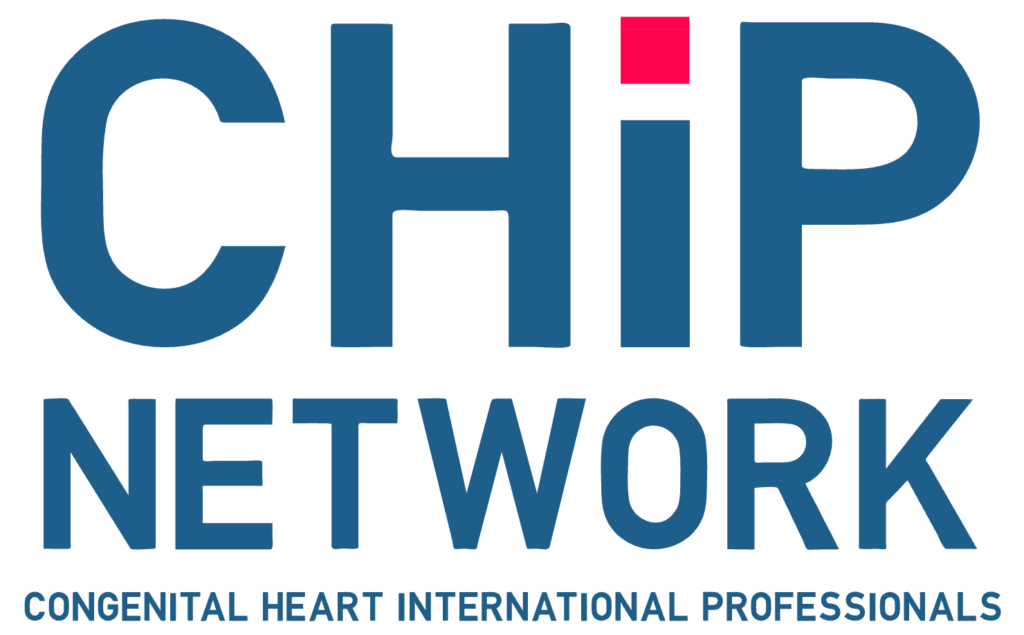
Heart University
Heart University aims to be “the go-to online resource” for e-learning in CHD and paediatric-acquired heart disease. It is a carefully curated open access library of educational material for all providers of care to children and adults with CHD or children with acquired heart disease, whether a trainee or a practicing provider. The site provides free content to a global audience in two broad domains: 1. A comprehensive curriculum of training modules and associated testing for trainees. 2. A curated library of conference and grand rounds recordings for continuing medical education. Learn more at www.heartuniversity.org/

CardioNerds Adult Congenital Heart Disease Production Team
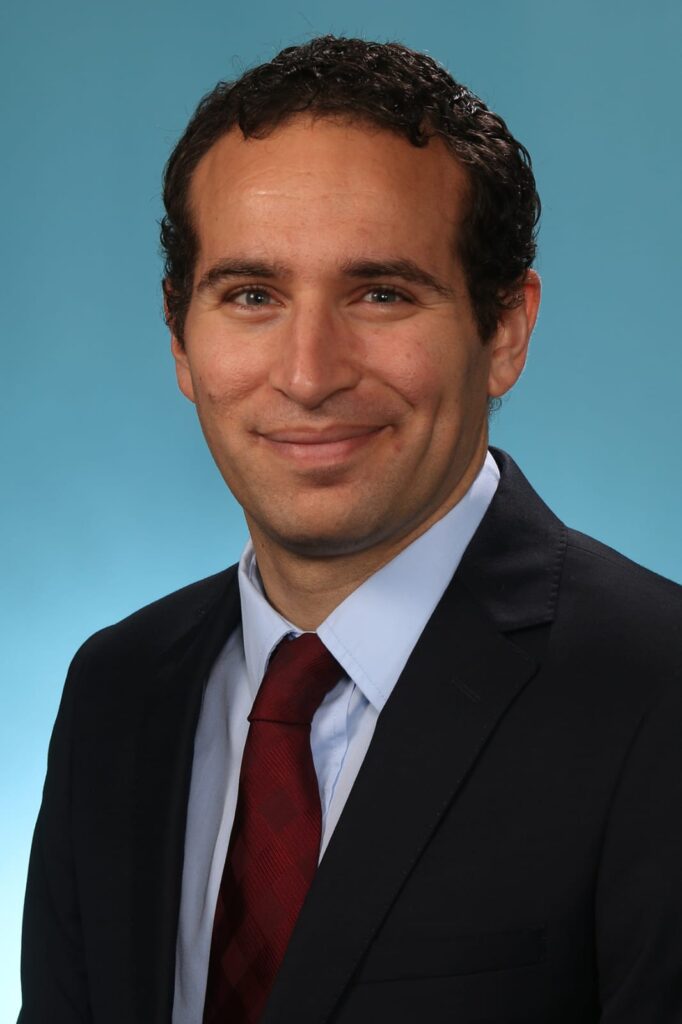

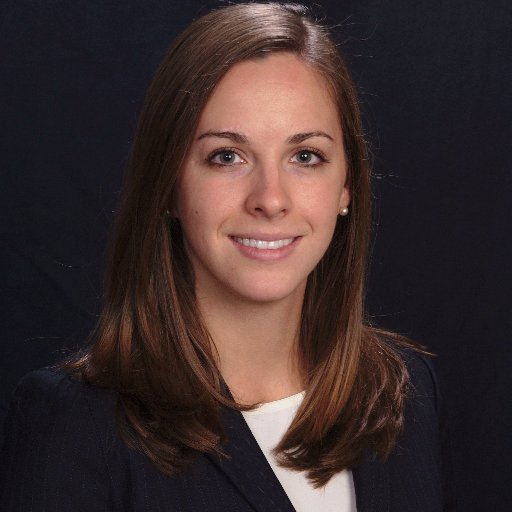
 Amit Goyal, MD
Amit Goyal, MD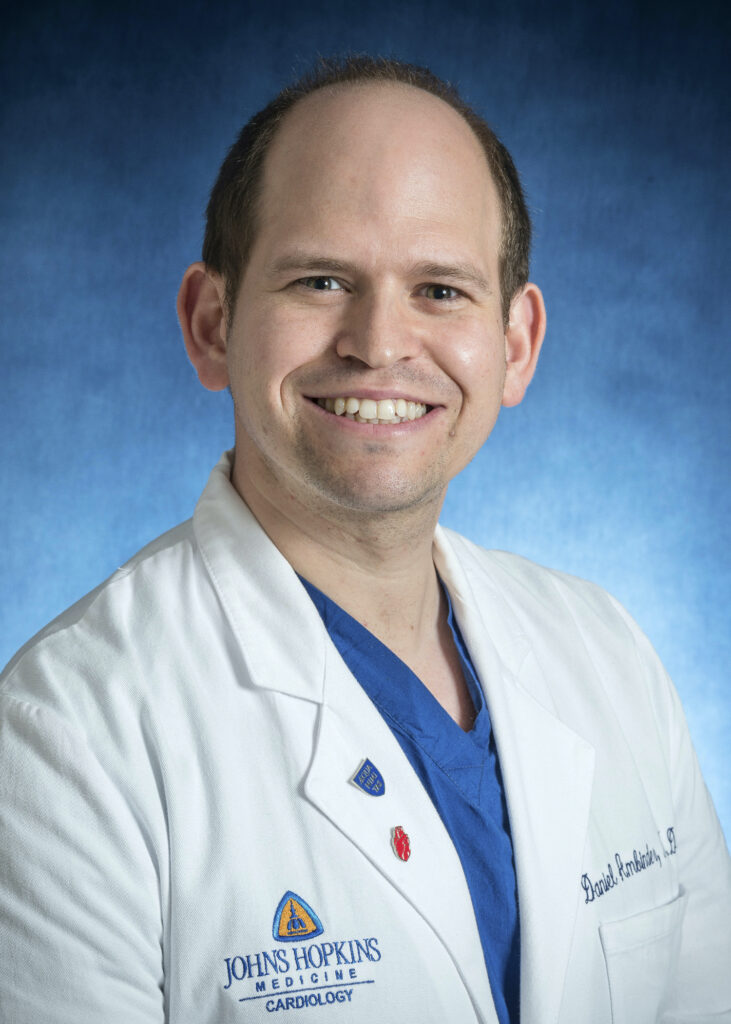 Daniel Ambinder, MD
Daniel Ambinder, MD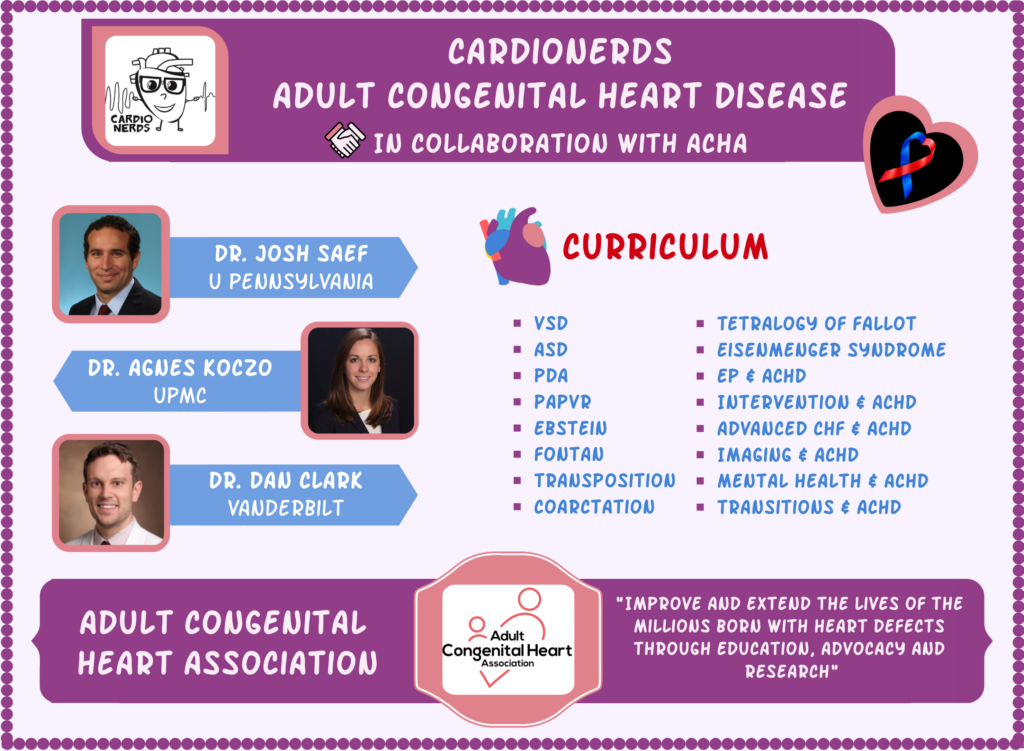






 Visit Podcast Website
Visit Podcast Website RSS Podcast Feed
RSS Podcast Feed Subscribe
Subscribe
 Add to MyCast
Add to MyCast